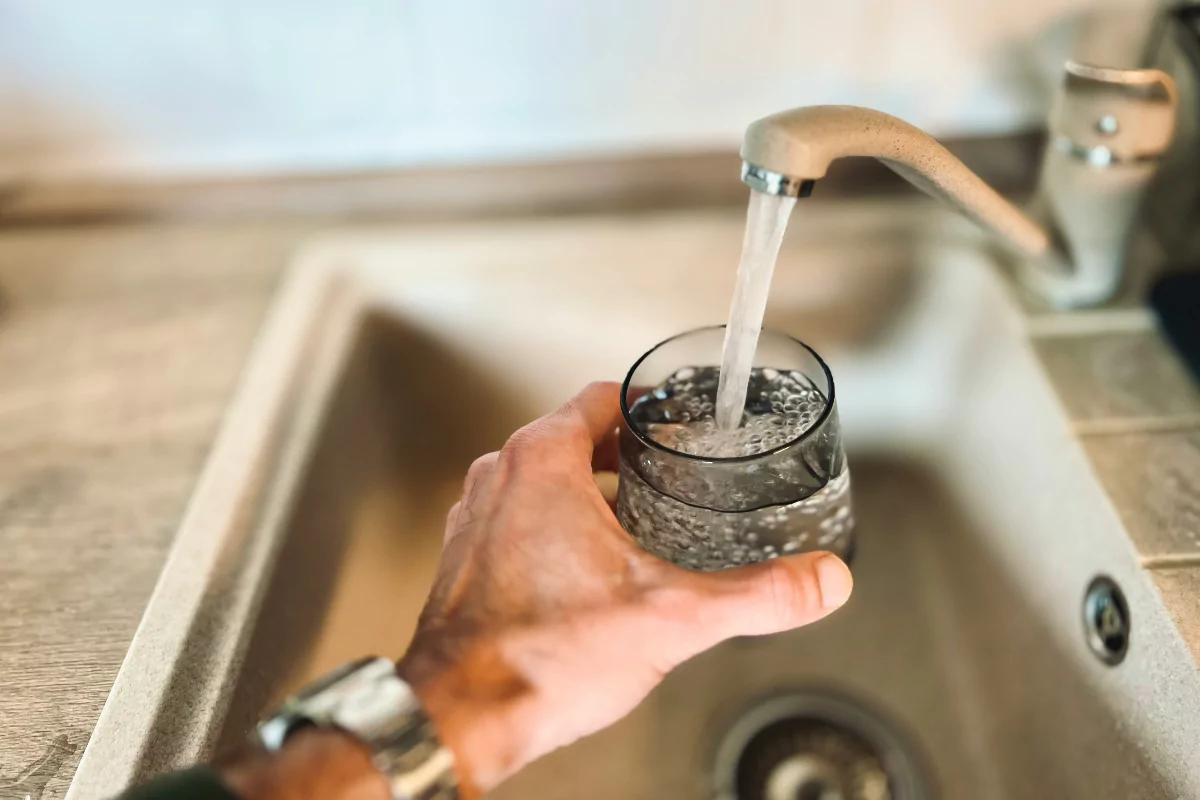France has published a new government map revealing the extent of PFAS chemicals – or else ‘forever chemicals’ because they never break down – in French water sources.
From the results, sixteen communes have been found with PFAS levels that breach European Union safety thresholds, with health warnings issued in the worst-affected areas.
The interactive mapping tool, launched at the end of July, brings together 2.3 million water analyses from over 21,000 sites nationwide. It covers everything from tap water to groundwater, surface water and industrial sources.
French newspaper Le Figaro’s analysis of the official data identified the 16 communes where PFAS levels exceed the EU limit of 0.1 micrograms per litre. The affected areas span the country, from Neuwiller, Blotzheim and Saint-Louis in Haut-Rhin near the German border, to Cherbourg-en-Cotentin in Normandy, and even Cognac in the Charente region.
The contamination isn’t limited to tap water either. Major bottled water brands including Perrier, Vittel, Hépar and Contrex have also been found to contain elevated PFAS levels.
In the most severe affected areas, authorities have taken no chances. Since May, vulnerable residents in 11 communes in Haut-Rhin have been advised not to drink their tap water at all. That warning is expected to stay in place until at least the end of December.
What exactly are PFAS?
PFAS stands for per- and polyfluoroalkylated substances – synthetic chemicals that have been used in industry and consumer products since the 1940s. They’re found in non-stick cookware, waterproof clothing, firefighting foam, and food packaging.
The problem is they stick around forever. These chemicals don’t break down naturally in the environment or in our bodies, which is why they’ve earned their sinister nickname. Studies have linked PFAS exposure to increased cancer risk, liver damage, and reduced effectiveness of vaccines.
Government promises transparency
The mapping project was developed by France’s Geological and Mining Research Bureau (BRGM) as part of a broader government action plan launched in April 2024. The initiative came after alarming reports of unsafe water supplies near Lyon and in south-west France.
The tool allows users to search for their local area and view detailed results from water testing. However, officials warn that people shouldn’t try to assess their own health risks from the data, as PFAS toxicity varies between different substances and scientific understanding is still evolving.
The platform pulls together data from four main sources: surface water monitoring makes up 59% of the analyses, groundwater accounts for 23%, industrial discharge data contributes 12%, and drinking water monitoring provides the remaining 6%.
Major changes coming in 2026
From January 2026, widespread PFAS monitoring in drinking water will become mandatory across the country, in line with European Union requirements.
The same timeline will see PFAS banned from cosmetics and certain clothing items. A nationwide health investigation is already underway to better understand how much the French population is exposed to PFAS and other chemicals like pesticides and plasticisers. The goal is to map the links between what people eat, drink, and breathe, and their health outcomes.
Stay updated with Monaco Life: sign up for our free newsletter, catch our podcast on Spotify, and follow us across Facebook, Instagram, LinkedIn, and Tik Tok.
Main photo credit: Unsplash Swanky Fella
